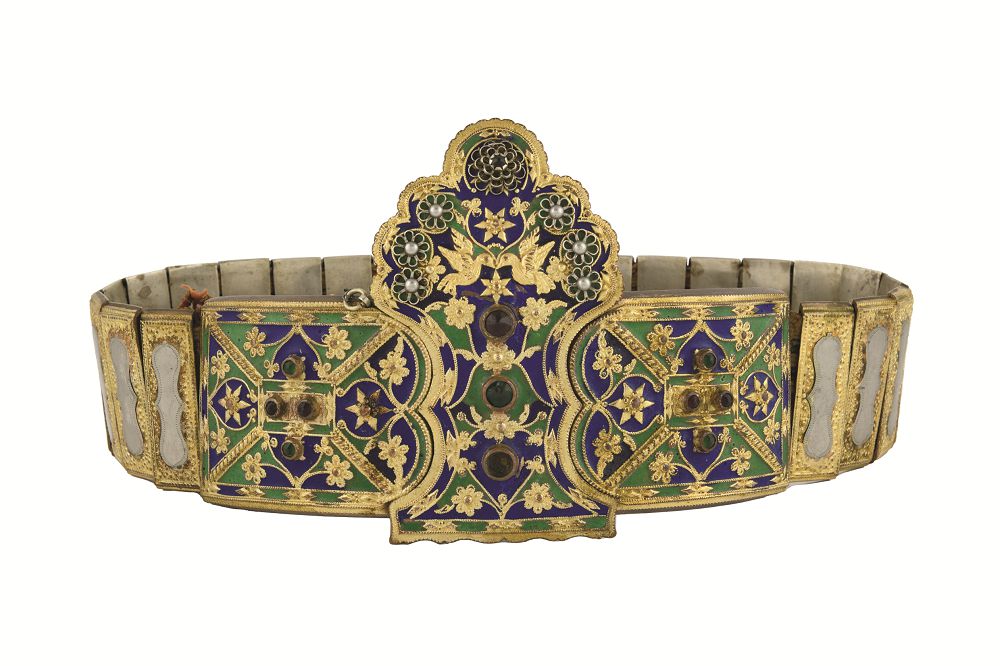
“With silverware and gold extraordinarily carved*”
*from the poem by Konstantinos Cavafy: “Waiting for the Barbarians”
Exhibition duration: 17 June-29 October 2023
Through a selection of jewelry from all over Greece, the exhibition aims to present a panorama of Greek silversmithing, whose works, with their material substance and aesthetic quality, reflect the particular historical, economic, and social conditions that determined their formation and use.
Headdress jewelry, earrings, and ribbons adorning the forehead, jewelry hugging the neck or covering the chest, huge buckles resting on the abdomen, and chain jewelry decorating the apron and back ornaments, Greek jewelry creates a complex system of adornment that beautifies and impresses.
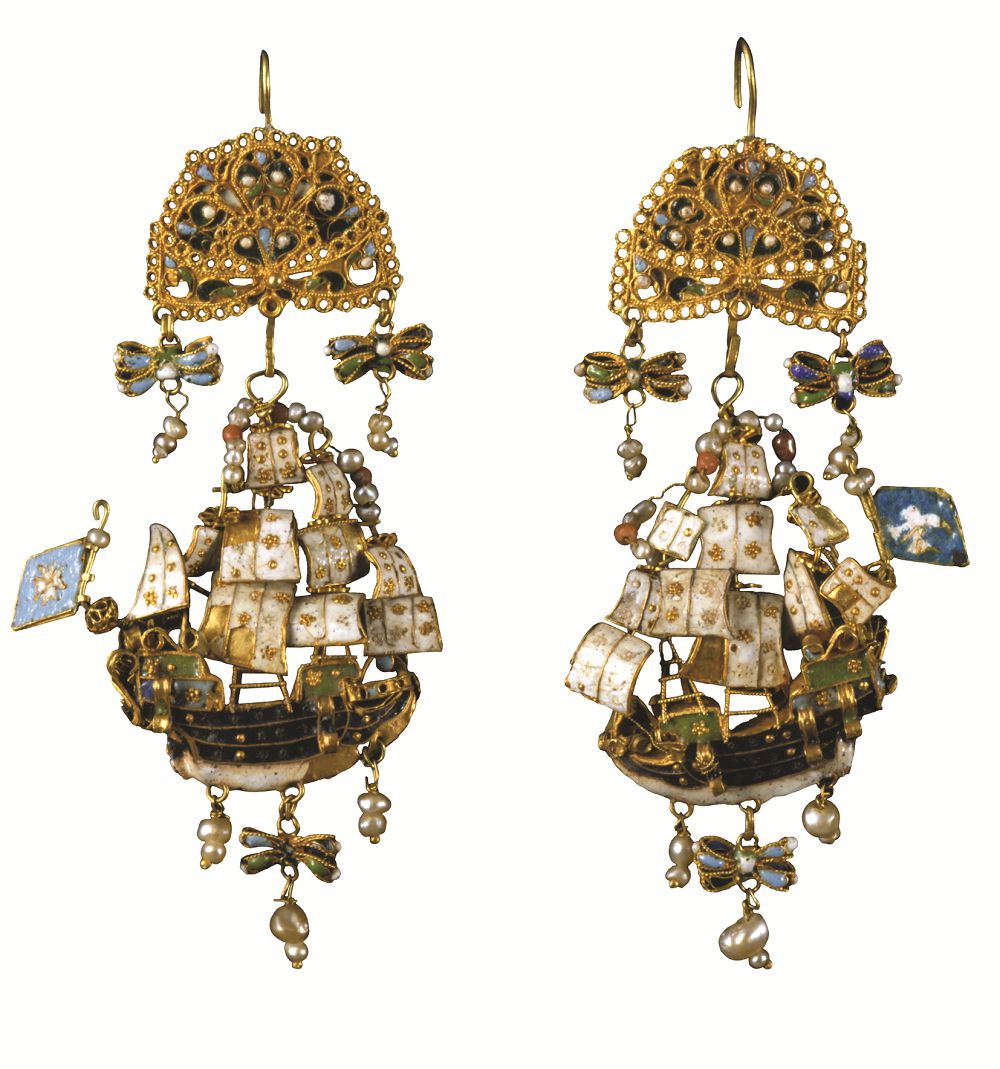
1. Pair of gold caravel shaped earrings, decorated with enamel and pearls. Patmos, 18th century.
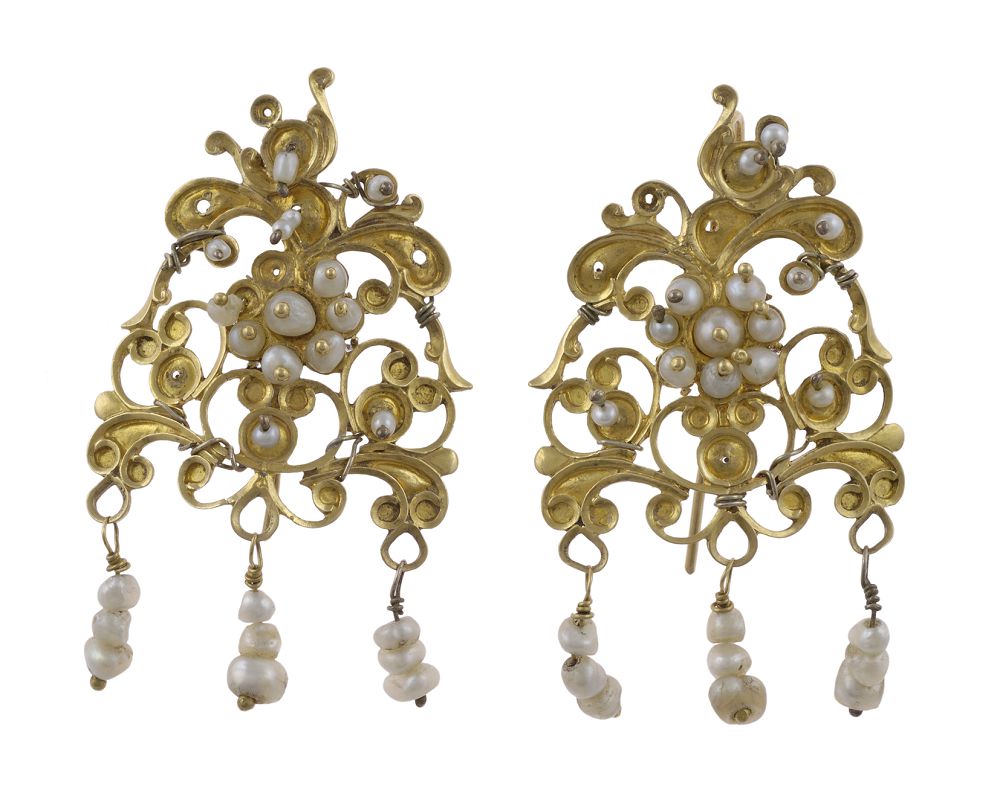
2. Pair of gold earrings with perforated decoration and pearls. Eptanisa, late 18th-early 19th century.
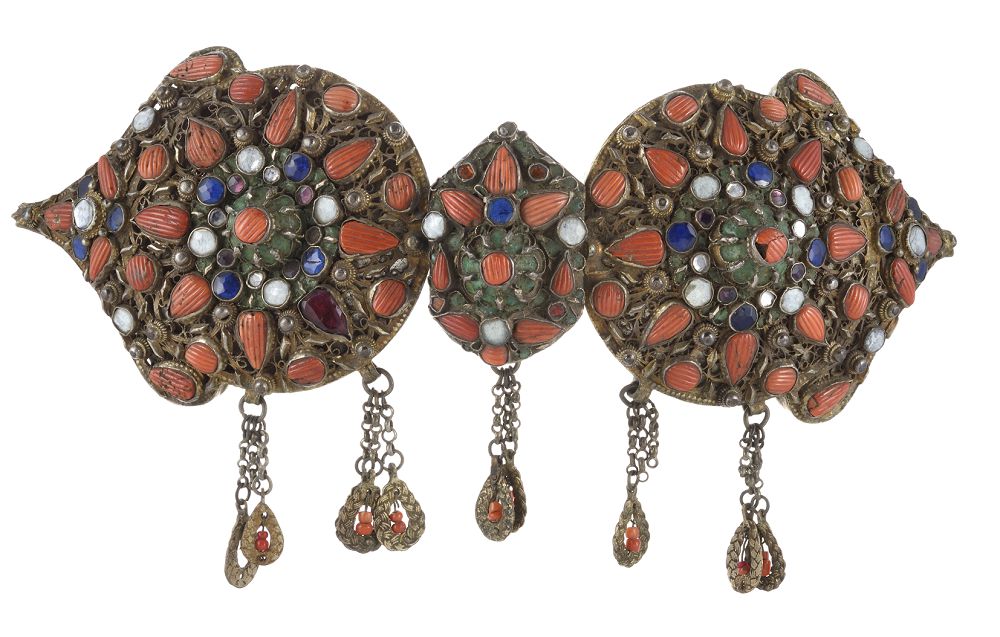
3. Belt buckle with inlaid incised coral. Attributed to Safraboli of Pontus, 19th century.
It is a concept of decoration that owes much to the social organization of the Greek communities of the 18th-19th century, in which marriage was a focal point in social and family life. The decoration of the bride reflected the economic status and social class of the two families and was a serious financial investment aimed at gaining status.
The predominant materials were gold and pearls in island Greece and silver, copper, and various mixtures in mainland Greece, materials which the craftsmen often gilded, decorated with semi-precious stones and colored glass, or painted with savati. Perforated, or worked with fine wire and embellished with fine pearls and enamel, the jewelry of the islands is distinguished for its delicate workmanship and precious materials. Forged, cast, pierced, or wired, the jewelry of mainland Greece is massive and complex and is complemented by various types of chains and coins.
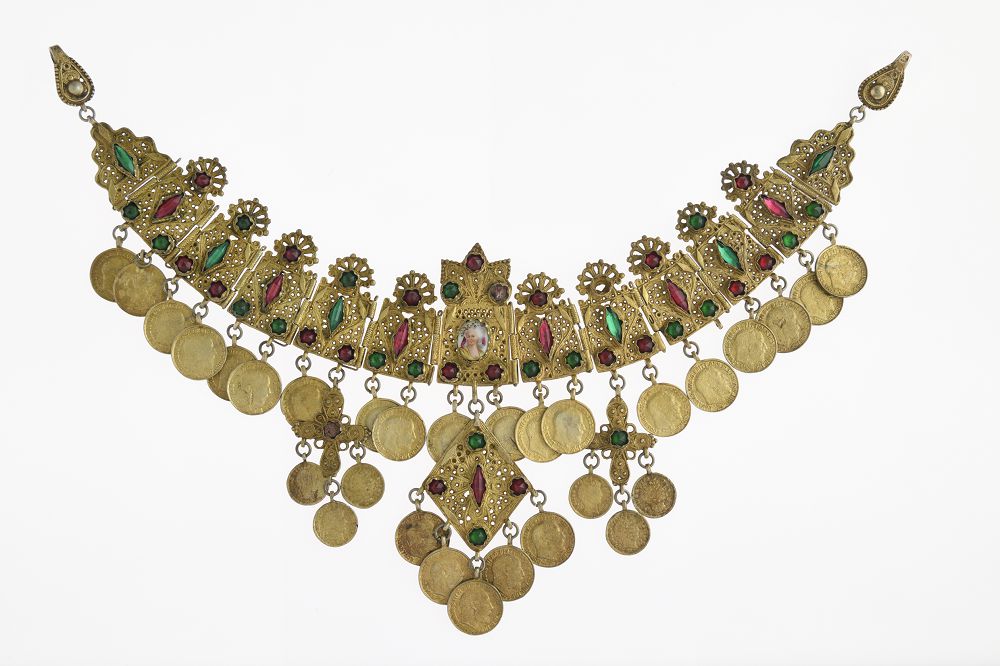
4. “Yordani”, wire necklace with pendant coins and a miniature female portrait in the centre. Mesogeia, Attica, second half of the 19th century.
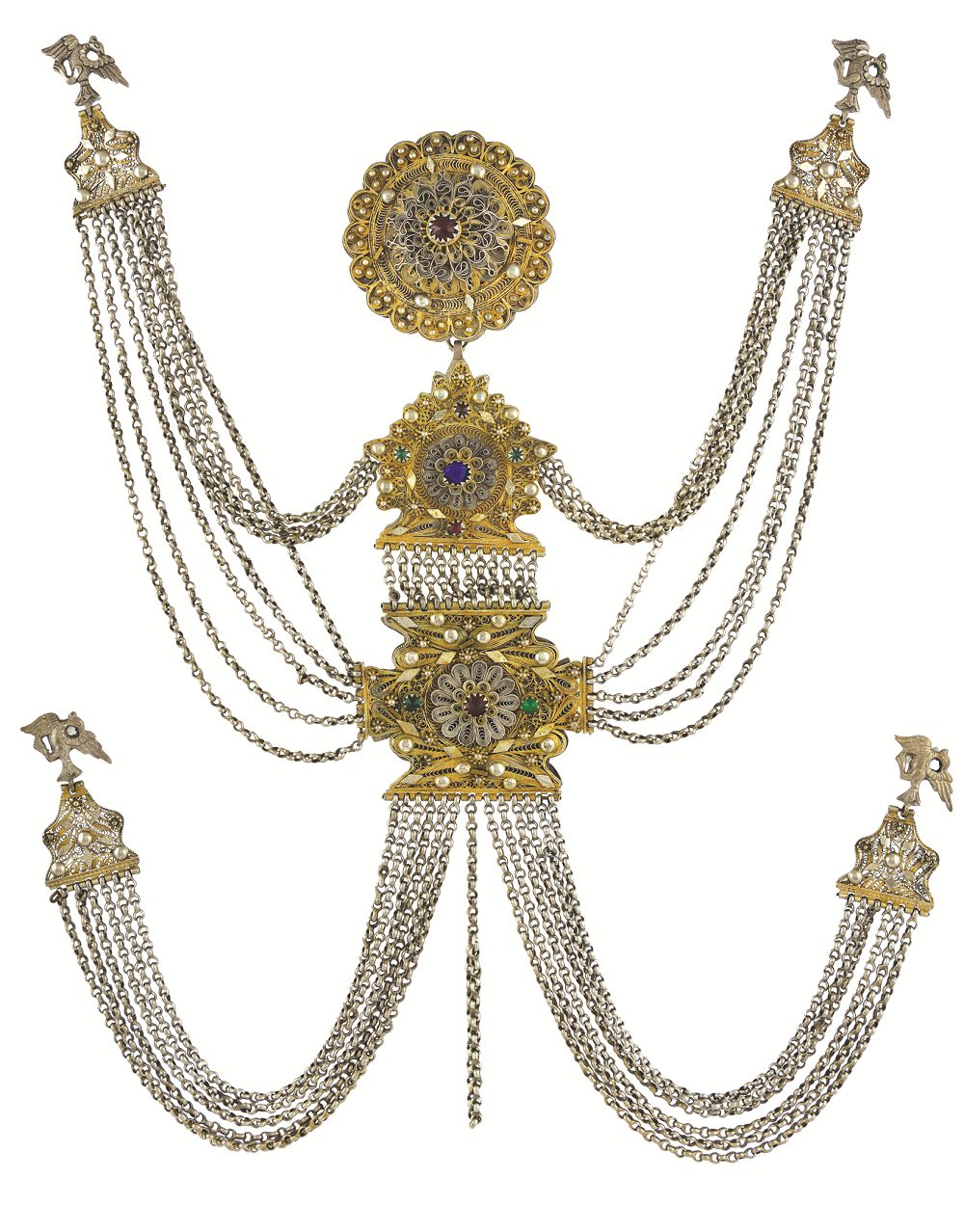
5. “Kisteiki”, breast jewellery with wire elements connected by chains. Thessaly, Karagounis, second half of the 19th century.
With the same care that women’s jewelry is crafted, utilitarian utensils also come from the hands of silversmiths: snuff boxes, canteens, canteens, and amulets, or weapons, part of men’s everyday life.
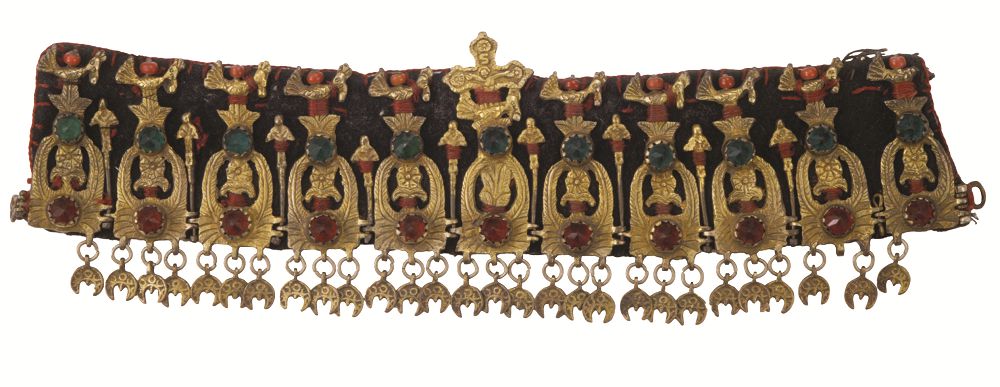
6. “Korona”, a piece of bridal jewellery with cast elements in the shape of a bird and a cross in the centre. Pogoni, Ioannina, 19th century.
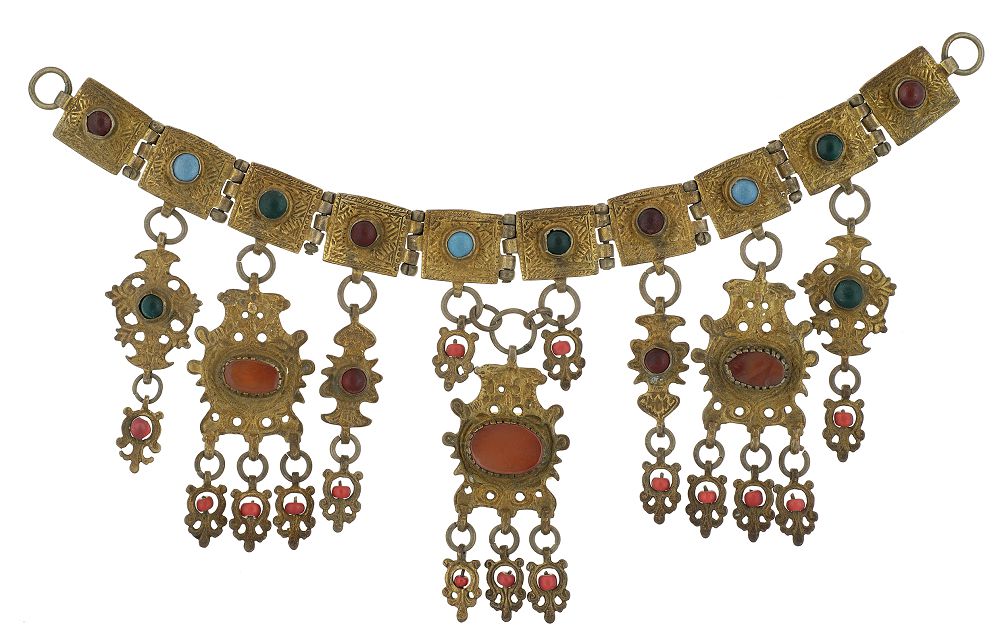
7. “Harhali”, necklace with pendant cast elements and semi-precious stones. Epirus, late 18th century.
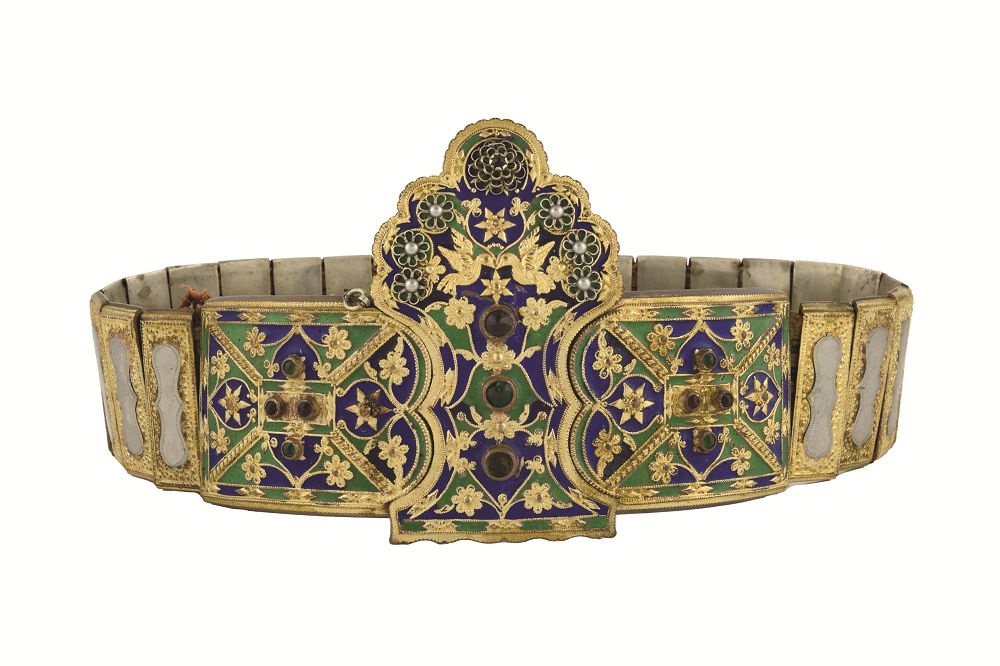
8. ‘Corona’, a bridal hinged belt with a buckle in the shape of a crown, decorated with enamel. Sufli, 19th century.

9. Leaf-shaped wire belt buckle with a two-headed eagle in the centre. Siatista, 19th century.
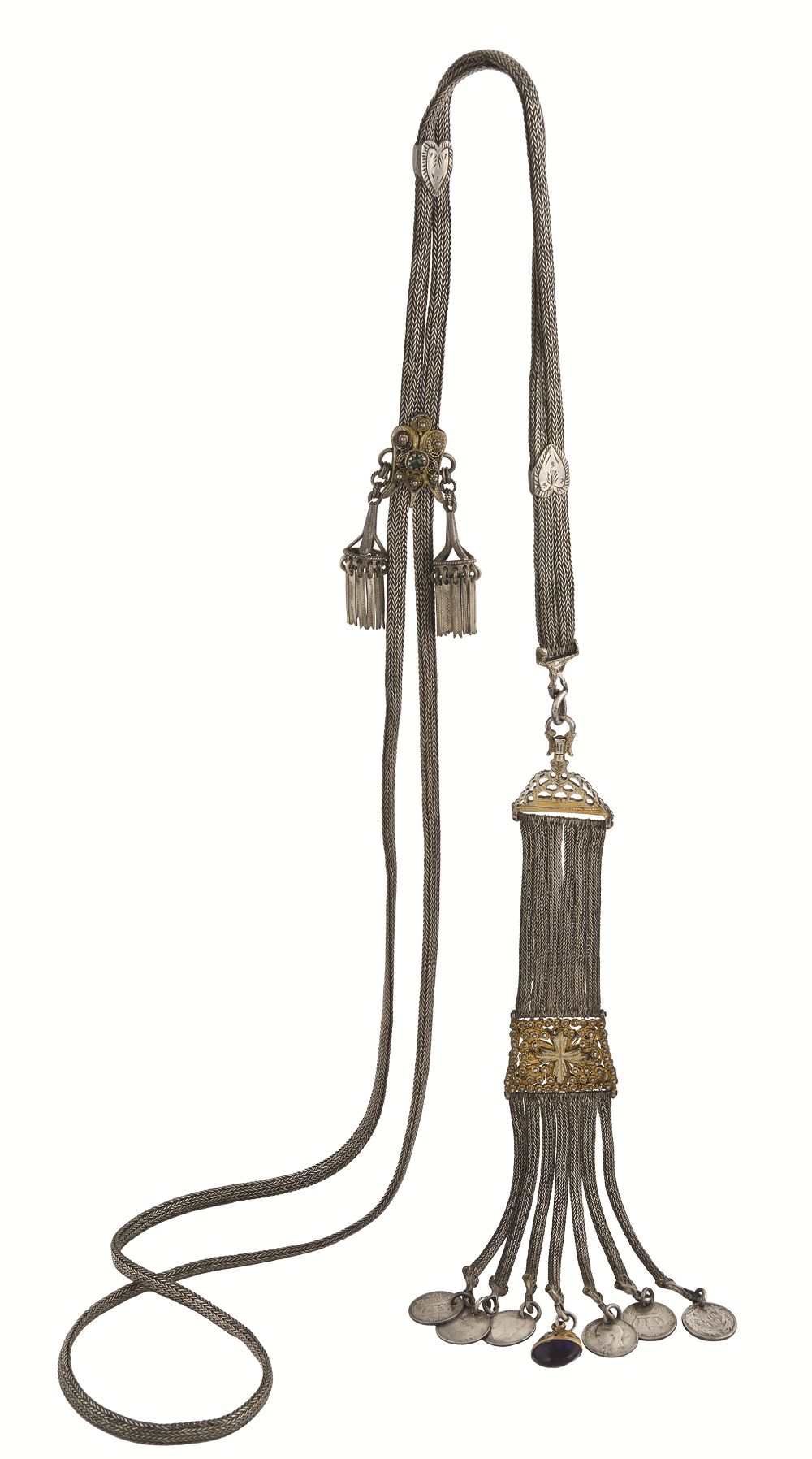
10. Clock chain. Crete, 19th century.




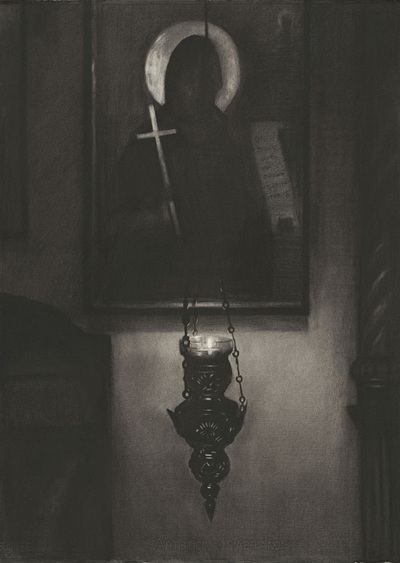


Leave A Comment